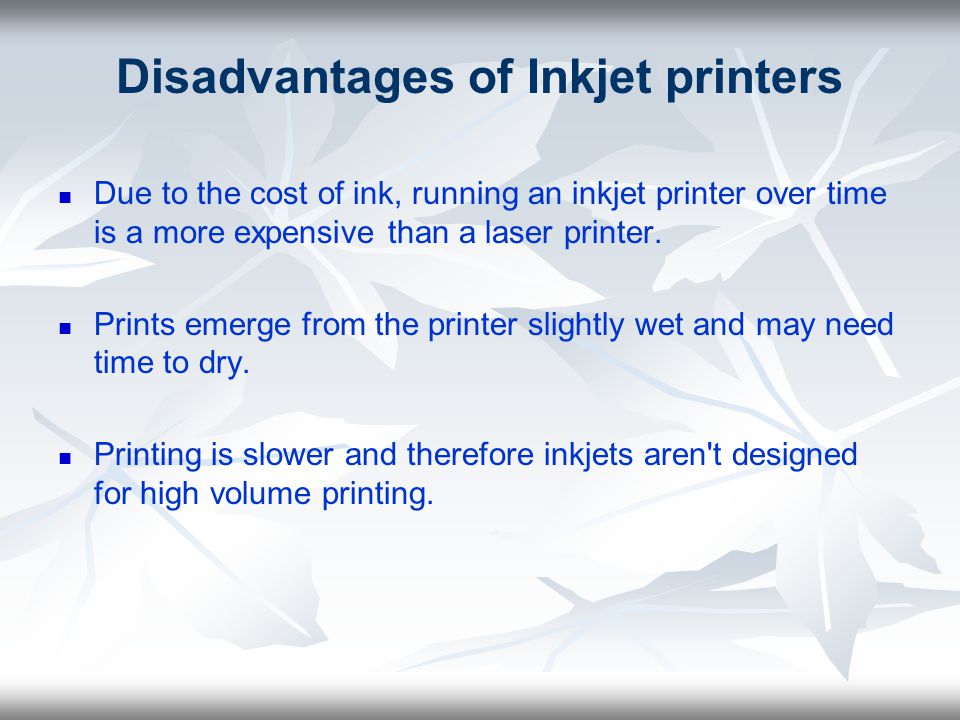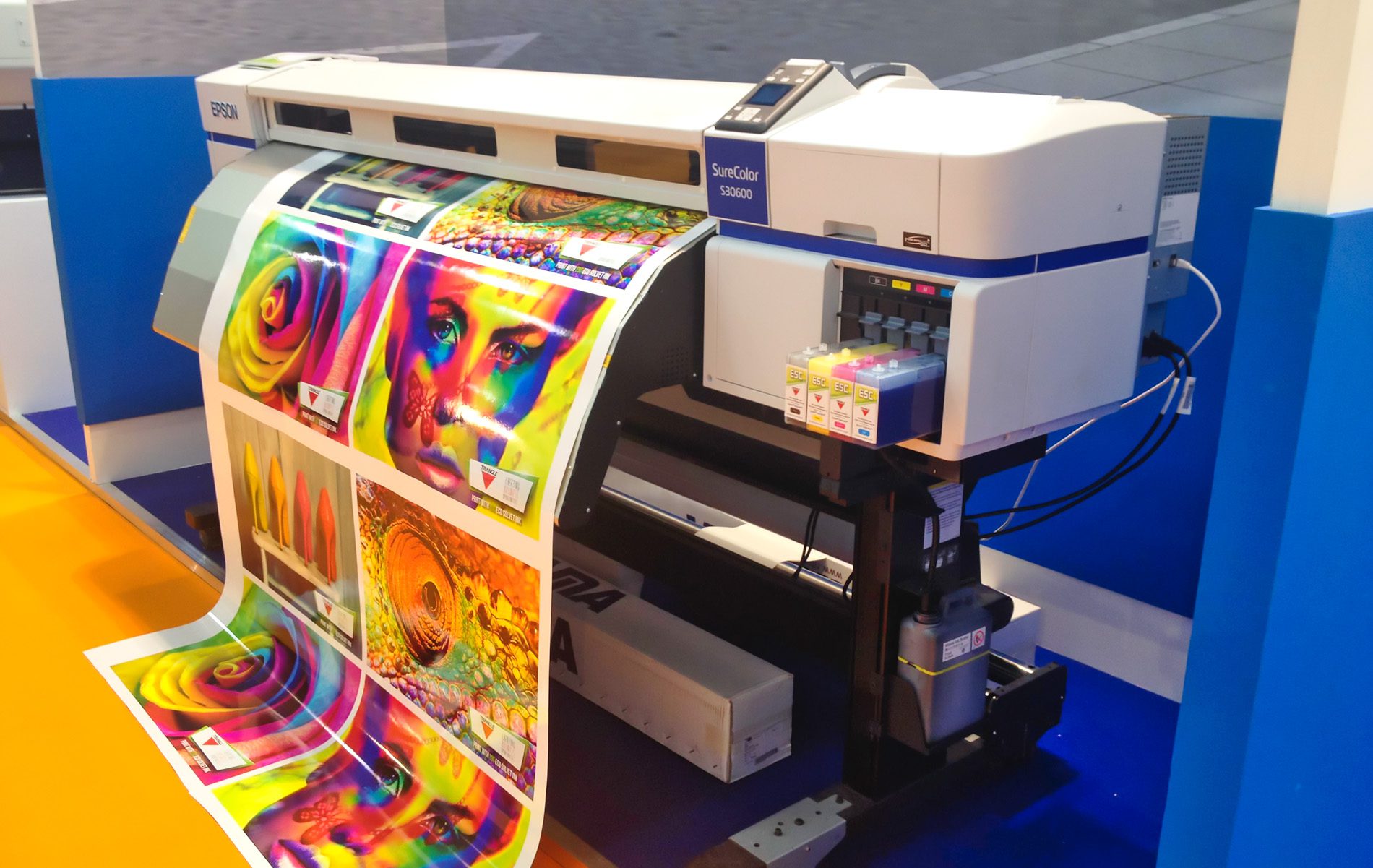Inkjet Printers: An In-depth Analysis of The Downsides
Introduction
In the world of printing technologies, inkjet printers are a popular choice amongst home users and small businesses due to their versatility and affordability. However, as with every technology, they come with their own sets of advantages and disadvantages. This comprehensive guide will delve into an in-depth analysis of the downsides of inkjet printers, including operating costs, print speed, and quality issues. It also offers insight on whether they are still worth considering despite their disadvantages and how to choose between inkjet and laser printers for personal use or business.
What Exactly Are Inkjet Printers?
Inkjet printers, standing true to their name, follow an operational principle that involves the spraying of minuscule ink droplets onto paper to mimic images or textual data. Celebrated for their potential to deliver premium-quality colored prints, they are a favorite choice for photography enthusiasts who thrive on printing photos.
They come in a versatile range of models:
- Basic, budget-friendly models that cater to standard printing assignments.
- More advanced, professional-grade inkjet printers designed for high-quality image and document printing.
Despite their perceived popularity, inkjet printers do harbor some drawbacks, particularly in terms of cost-effectiveness and operational efficiency. It's crucial to understand these potential downsides to make an informed decision when choosing the right printer for your needs.
How Do the Inkjet Printers Work?
Inkjet printers function based on a relatively straight forward method - they spray tiny droplets of ink onto paper to create text or imagery. To better grasp how inkjet printers accomplish this, let's break down their printing process:
- Receipt of Document or Image: Whenever a document or image is sent to the printer, the printer's job is to transform this digital data into a series of instructions.
- Instruction Transmission: These instructions guide the jet nozzles present in the printer.
- Jet Nozzle Activation: The jet nozzles follow instructions and spray the ink onto the paper in a specific pattern. This pattern is designed to duplicate the original image or document.
- Precision is Key: Creating a beautiful, smoothly colored, and high-resolution image necessitates extremely tiny, accurately deposited ink droplets.
Though the process seems simple, it's the precise distribution of these tiny droplets that contributes significantly to the strength of the inkjet printer, allowing it to produce rich and detailed prints.
What Disadvantages Can I Expect from Inkjet Printers?
Inkjet printers certainly have their fair share of advantages, such as high-quality color prints and affordability, but it's crucial to look at the other side of the coin. Let's examine three key disadvantages that you might face while using inkjet printers: elevated operation expenses, lower print speed, and potential quality concerns.
Do the Operational Costs of Inkjet Printers Skyrocket?
- High Ink Costs: Undoubtedly, one of the most significant setbacks of inkjet printers is the expensive ink cartridges. The price of these cartridges can pile up rather quickly, particularly if you print often or in large numbers.
- Frequent cartridge replacement: Some inkjet printer models require regular cartridge updates, adding an extra layer of operational costs.
Does the Printing Speed of Inkjet Printers Slowdown Your Workflow?
- Lower Print Speeds: When juxtaposed with laser printers, inkjets often lag in terms of print speed. This slower rate may disrupt productivity, especially in a bustling office environment that demands large-scale print outputs.
Will You Compromise on Quality with Inkjet Printers?
- Smudging Risks: While inkjet printers unquestionably offer high-resolution prints, they might run into certain quality problems. One being their susceptibility to smudging, especially when in contact with moisture or if the ink isn't thoroughly dried. This issue tends to arise when using low-cost ink or paper.
- Color Inconsistencies: Despite their reputation for excellent color reproduction, inkjet printers can show variations in color quality and texture, particularly when the printer is not routinely used or maintained.
In a nutshell, the potential disadvantages of inkjet printers center around the high operational costs, slower print speed, and the likelihood of quality inconsistencies. Knowing these setbacks can help you make an informed decision if an inkjet printer aligns with your specific printing requirements or if it's worth exploring other printing technologies.
Are Inkjet Printers Still Worth it Despite their Disadvantages?
Inkjet printers, like all devices, pose certain disadvantages. Yet, their worth might still be seen in light of several redeeming factors. Here's a deeper dive into whether the disadvantages of inkjet printers cloud their value:
- Versatility: One of the significant pros of inkjet printers is their adaptability. They are capable of printing on an extensive range of media types, from standard paper to glossy photo paper, and tackle a variety of sizes. This versatility makes them a worthwhile investment for users requiring a multitalented printer.
- Excellent Color Reproduction: For individuals or businesses requiring high-quality color image prints, inkjet printers stand out. Their admirable color reproduction competes with that offered by professional print shops, and they excel especially in printing photos and color-laden documents.
- Lower Initial Costs: Typically, inkjet printers are priced lower than their laser counterparts. They thus offer an economically viable entry point for users who do not have high-volume printing needs, mainly home users and small businesses.
- Improved Quality over Time: Modern inkjet printers have come a long way in terms of quality enhancements. Smudging issues that plagued earlier models have been substantially reduced with the use of superior quality inks and papers. Also, advancements in printing technology mean that the text quality is now more refined, solid, and easy to read.
However, these points do not negate the fact that inkjet printers can pose high operating costs, slower print speeds, and are susceptible to quality issues. These drawbacks, along with the outlined benefits, must be thoroughly considered while evaluating the worth of inkjet printers against personal or business needs.
In conclusion, despite certain drawbacks, inkjet printers carry immense value for users with specific printing needs such as printing in various media types, and producing high-quality color and image prints. Thus, understanding both the advantages and disadvantages of inkjet printers can lead to a well-informed purchase decision.
Choosing Between Inkjet and Laser Printers: Which is More Suitable For Your Personal Use or Business?
Determining whether to invest in an inkjet or laser printer for your personal or professional needs can be a daunting task. The choice largely depends on the volume and type of printing tasks you regularly perform, as well as your allocated budget. Here's a user-friendly comparison to help streamline your decision-making process:
- Inkjet Printers:
- *Advantages*:
- Versatile; can handle a variety of media types including glossy photo paper, and various sizes.
- Best suited for high-quality color and image prints.
- Generally, initial purchase cost is lower than laser printers, thus ideal for users with minimal printing needs.
- *Disadvantages*: High operational costs, slower print speed, and potential for smudged prints especially when exposed to moisture or before the ink dries completely.
- Laser Printers:
- *Advantages*:
- Ideal for businesses needing fast, high-volume monochrome printing.
- Precision, speed, and low cost-per-page make these printers cost-effective in the long run.
- Excellent for text documents, and can handle a higher volume of prints.

- *Disadvantages*: High initial cost, not optimal for high-quality photo prints, and color laser printers can be expensive.
In short, if your print requirement is centered more around vibrant graphics, presentations, or brochures: go for an inkjet printer. Conversely, if you need quick, large-volume black and white prints: a laser printer is your best bet. Always weigh your specific printing requirements, volumes, and your budget before making your decision.
Conclusion
In conclusion, while inkjet printers may have their shortcomings in terms of operating costs, print speed, and quality issues, they are still worth considering for particular uses. Their versatility, excellent color reproduction, and initial cost-effectiveness make them a useful asset for home users and small businesses. Thus, understanding the downsides of inkjet printers will allow you to make a more informed decision when choosing a printer that best fits your needs.
Related FAQs about what are the disadvantages of inkjet printers
Are High-Quality Prints Guaranteed with Inkjet Printers?
Inkjet printers are celebrated for their ability to deliver high-quality prints, especially for colored images and photographs. However, several factors can influence this, including ink and paper quality and printer maintenance. While generally, they're constructed to create sharp, vibrant prints, the quality range varies with different models.
How Does The Expensive Nature of Ink Affect Overall Maintenance Costs?
Inkjet printers use ink cartridges, which can be fairly expensive and add significantly to the printer's ongoing costs. This is more apparent for users who print more regularly or in larger volumes. The high cost of ink, combined with its consumption rate, directly impacts the overall maintenance cost.

Is the Noise Level of an Inkjet Printer a Significant Issue?
Noise levels vary by model, but generally, inkjet printers operate quietly compared to other types of printers. Occasionally, some models may produce noise during heavy-duty tasks but it’s usually not disruptive. Check specific printer models for noise level details for a more accurate assessment.


